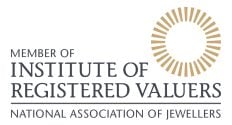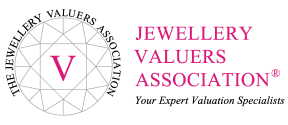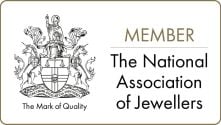Jewellery valuations can be carried out for Insurance, Probate, Sale Between Two Parties and Family Division.
Unlike many companies, with Gerry & Co, your valuation is carried out by trained, competent valuers on the premises so we have no need to send your items away to a third party.
Jewellery valuations are undertaken by the following members of staff:
Gerry & Co Manager, Mr James Chanter – one of just a few valuers in the UK to have attained the status of Fellow of the Institute of Registered Valuers and he is also a Fellow of the Jewellery Valuers Association.
Mrs Fay Terras is a highly experienced valuer and holds the National Association of Goldsmiths Professional Jewellers Valuation Diploma.
Mrs Elizabeth Wickson is a Member of the Institute of Registered Valuers.
To many people, a valuation is something that can be given immediately – a belief that has undoubtedly been re-enforced by the many television programmes such as the BBC’s Antiques Roadshow where experts are seen giving ‘on the spot’ valuations.
For example, when one of the experts announces that a date letter in a hallmark is from a particular year, it is not that they immediately ‘know’ this information, rather that prior to announcing the fact to the camera, they, or a researcher, has looked up the information in a publication such as ‘Bradbury’s book of Hallmarks’.
Similarly, diamond colour, clarity and carat weight all need to be checked in the correct lighting conditions (daylight or using a daylight bulb, and with the correct tools, and also, the gems need to have been cleaned first!
Another misconception is that an item has a set value. In reality, however, the ‘value’ will vary depending on the reason the valuation is needed.
The two most common forms of jewellery valuations are:
- Valuation for Insurance – this is always the highest value for an article as it is the price you would expect to pay if the item needed to be replaced in the event of damage, loss or theft. A comprehensive insurance valuation will have a full description of each article and will be accompanied by a colour photograph of the item to aid identification.
- Valuation for Probate – this type of valuation is carried out upon the death of the owner. Probate valuations can be needed for HM Revenue & Customs to see if duty needs to be paid and these are often requested by the solicitor dealing with the deceased’s estate. The value attributed to the items in a Probate valuation is based on the market value (i.e. the amount the owner could have expected to sell the item for) at the date of death. The value of items for Probate is much lower than for an insurance valuation and it must be noted that for this reason you must not insure items at a probate price as, in the event of a claim you would be under insured.
How We Produce Your Jewellery Valuation:
The items must be booked in on a ‘Taking in Form’ detailing the owners name and address, whether or not there are previous valuation documents, origin of the items i.e. purchased new or secondhand etc. Each item is given a very basic description and any damage noted.
Once the customer has gone and we are ready to commence the valuation, we clean the items. Sometimes at this point damage can been seen to the stone or setting that was not seen at the point of booking in, in which case, we will contact the customer to inform them and to see if they would like a quote to rectify this.
The carat of the metal is determined either by the UK or Convention hallmark or, in the case of unmarked articles by testing the metal.
Each gemstone has to be measured and the carat weight calculated/estimated. We do NOT take gemstones out of the settings to weigh them, measurements are taken in situ and then scientific formulae are used to calculate the weight of the different gemstones.
Diamonds have to be assessed for colour under a daylight lamp alongside a graded set of master stones to the best of our ability as the stones are usually already set in a mount, and also the clarity needs assessing using a 10x lens with is achromatic and aplanatic lenses to correct the way the light reacts through it. We are also fortunate to be one of very few establishments to have two machines to help confirm whether diamonds are natural or laboratory grown, the Gemetrix and EXA.
Coloured stones are examined to check if they are of natural origin and not a man made synthetic stone. For this we have a selection of gemmological equipment including microscope, polariscope, refractometer, spectroscope, dichroscope and ultraviolet light source. They can then be colour graded according to GemGuide World of Colour.
Detailed working notes and descriptions are made, photograph are taken and only then can the valuation schedule be typed up. As you can now appreciate this all takes a considerable amount of time.
On the whole, we aim to complete a valuation within about 4 weeks although it does depend a little on the volume of valuations in the system at the time.




